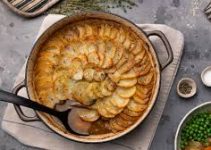The macaron, a delicate and colorful meringue-based confection, has captured the hearts and palates of dessert enthusiasts around the globe. Known for its crisp shell, chewy interior, and a plethora of flavors, the macaron is not just a treat but a symbol of elegance and sophistication in the world of patisserie. This article delves into the history, artistry, and cultural significance of the macaron, exploring its journey from humble beginnings to becoming a global culinary icon.
A Brief History of Macarons

The origins of the macaron date back to the Renaissance period, though its exact beginnings are somewhat disputed. Some historians trace the macaron’s roots to Italy, where it was brought to France by Catherine de Medici’s Italian pastry chefs upon her marriage to Henry II of France in 1533. These early macarons were simple almond meringue cookies, a far cry from the colorful and filled versions we know today.
The macaron as we recognize it, with its smooth, glossy surface and delicate feet, is attributed to the French, particularly the Parisian patisserie Ladurée. In the early 20th century, Pierre Desfontaines, the second cousin of Louis Ernest Ladurée, is credited with creating the modern macaron by sandwiching two meringue cookies with a ganache filling. This innovation transformed the macaron into the sophisticated and visually appealing treat that has become synonymous with French pastry excellence.
The Art of Making Macarons
Crafting the perfect macaron is an art that requires precision, skill, and patience. The macaron’s delicate structure and unique texture are achieved through a meticulous process that involves several key steps:
- Ingredients and Preparation: The primary ingredients for macarons are almond flour, powdered sugar, egg whites, and granulated sugar. The quality of these ingredients is crucial, particularly the almond flour, which must be finely ground and sifted to ensure a smooth texture.
- Meringue Making: The first critical step is creating a stable meringue. There are two main methods: French meringue, where sugar is gradually added to whipped egg whites, and Italian meringue, which involves pouring hot sugar syrup into the egg whites as they are whipped. Both methods aim to achieve a glossy, stiff meringue that forms the base of the macaron batter.
- Macaronage: This is the process of folding the dry ingredients into the meringue. The batter must be mixed to the perfect consistency – not too runny and not too stiff. Achieving the right texture is crucial for the macarons to develop their characteristic feet and smooth tops.
- Piping and Resting: The batter is then piped onto baking sheets in small, uniform circles. The piped macarons must rest at room temperature until a skin forms on their surface, which can take 20 to 40 minutes. This step is essential for developing the feet during baking.
- Baking: Macarons are baked at a low temperature, around 300°F (150°C), for about 15-20 minutes. The key is to bake them long enough to cook through without browning, which can affect their color and texture.
- Filling: Once baked and cooled, the macarons are filled with a variety of fillings such as buttercream, ganache, or fruit preserves. The filled macarons are then typically aged for 24 hours to allow the flavors to meld and the texture to improve.
Flavors and Innovations

One of the most appealing aspects of macarons is their versatility in flavors and colors. Traditional flavors include vanilla, chocolate, raspberry, and pistachio. However, modern pastry chefs have pushed the boundaries, creating innovative flavors such as matcha green tea, lavender, salted caramel, and even savory options like foie gras and truffle.
Color is also a significant aspect of macarons. The vibrant hues of these confections are achieved using food coloring, and they often reflect the flavor within. For instance, a bright yellow macaron might indicate a lemon flavor, while a deep purple one could suggest blackberry or cassis.
Macarons in Global Culture
While the macaron is quintessentially French, it has found a home in many countries around the world, each adding its unique twist to the classic recipe. In Japan, for example, macarons are often infused with local ingredients like yuzu and sakura (cherry blossom). In the United States, the macaron has become a popular treat at weddings, parties, and upscale bakeries, often customized to match event themes or personal preferences.
The Science Behind the Macaron
The success of a macaron lies not just in its ingredients latoto and technique but also in understanding the science behind its creation. The interaction between the egg whites and sugar in the meringue forms the structure of the macaron. The almond flour provides the density and the unique chewy texture.
The macaronage process, where the batter is mixed to the right consistency, involves the deflation of some air in the meringue while still retaining enough to give the macaron its rise. This balance is critical and often the most challenging part of macaron-making for both amateur and professional bakers.
Challenges and Troubleshooting

Making macarons can be notoriously tricky, and even experienced bakers encounter challenges. Common issues include cracked shells, hollow centers, uneven feet, and sticky bottoms. Each of these problems can usually be traced back to specific steps in the process:
- Cracked Shells: Often caused by not allowing the macarons to rest long enough before baking or by oven temperature fluctuations.
- Hollow Centers: Can result from over-mixing the batter or baking at too high a temperature.
- Uneven Feet: May occur if the batter is not mixed evenly or if the baking sheet is not level.
- Sticky Bottoms: Typically a sign that the macarons are underbaked.
Troubleshooting these issues involves adjusting techniques and sometimes trial and error, highlighting the macaron’s reputation as a challenging yet rewarding pastry to master.
Macarons and Social Media
In the age of social media, macarons have become a popular subject for food photography and blogging. Their vibrant colors and elegant appearance make them highly photogenic, contributing to their popularity on platforms like Instagram and Pinterest. Many bakeries leverage this visual appeal, creating custom macaron towers and intricate designs to attract customers and followers.
Conclusion: A Confectionery Masterpiece
The macaron’s journey from a simple almond meringue cookie to a global confectionery masterpiece is a testament to its timeless appeal and the artistry involved in its creation. Whether enjoyed in a Parisian café, at a high-end bakery in New York, or as a homemade treat, the macaron continues to enchant and delight dessert lovers around the world.
Its delicate balance of texture and flavor, combined with its aesthetic beauty, makes the macaron a true icon of the patisserie world. As chefs continue to innovate and experiment with new flavors and techniques, the macaron’s legacy as a beloved and sophisticated dessert is assured for generations to come.
Read More Article About “Lechón Filipina: Kenikmatan Kuliner dari Pulau-pulau Filipina“



